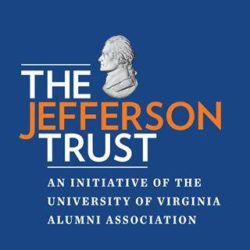Lawnside Park
Known Name(s)
Lawnside Park
Address
Evesham Avenue Lawnside, NJ
Establishment Type(s)
Parks, Zoos, Aquarium and Gardens
Physical Status
Extant
Detailed History
In 1926, William A. Willis acquired over 14 acres of land on Evesham Avenue, Somerdale, NJ, from Horace Mann Ebert of Ashland. This tract, adjacent to Lawnside, Magnolia, and Ashland, was later transferred to the Lawnside Park Association by Willis and his wife, Laura P. To finance the development of what would become New Jersey's first Black-owned amusement park, the corporation sold $2000 in stock. This groundbreaking venture eliminated the restrictions Black individuals faced in accessing recreation parks, providing daily enjoyment from Memorial Day to Labor Day. In contrast, nearby parks, like the one in Clementon, remained segregated with limited entry days for Black patrons. The park officially opened its gates in 1927, drawing crowds of thousands from the tri-state area and beyond. Just 12 miles from Philadelphia, this recreational haven became a magnet for churches, business clubs, political groups, companies, organizations, and families, offering an inclusive space for enjoyment and community gatherings.
Founded in 1926, the Lawnside Park Association initiated the creation of the groundbreaking Lawnside Pleasure Park by selling $2,000 worth of stock. Led by notable figures like Isadora Martin, a prominent realtor and NAACP branch president, and Arthur S. Bailey, manager of the Cotton Club, the association aimed to establish an inclusive space for amusement, sports, and games. The park quickly became a cultural epicenter, hosting events for diverse social, political, religious, and community organizations. From Moonlight dancing in the dance pavilion to orchestras, boating, and swimming, the park offered a vibrant and diverse range of activities. Annual picnics drew thousands, such as the 1928 gathering of 5,000 from Mt Zion CME, arriving in a spectacular procession of buses, automobiles, motorcycles, and even bicycles. Early descriptions capture the lively atmosphere, as exemplified by a business men's association event featuring parades, contests, sporting events, and the highlight—an ox barbecue. In the 1930s, the park expanded its offerings, introducing ponies, a merry-go-round, ferris wheel, airplane chairs, shooting gallery, a sports gallery, concessions, and even a crystal swimming pool and beer garden. The addition of the Cotton Club, seating 400, further elevated the entertainment with cabarets and a variety of wines and liquors. Lawnside Park also became a sports hub, attracting teams for swim meets, baseball games, and competitions. The Lawnside Ladies team and the Lawnside Stars competed in swimming and baseball, while teams like Paulsboro and the Quaker City Giants utilized the field for their home games. The park's diverse attractions and events made it a cultural landmark, fostering community, entertainment, and competition throughout its storied history. Lawnside Park witnessed significant milestones and events throughout its history. In a historic visit, Congressman Oscar DePriest, the first African American elected to Congress in the 20th century, graced the park. Another noteworthy occurrence was the baptism of 200 people in the lake by Charles Manuel "Sweet Daddy" Grace, drawing a crowd of both Black and White spectators. In 1955 the park ceased to be listed in the Green Book.. By the 1960s, the recreational area faded. Though these landmarks disappeared, their memory endures, reflecting a nostalgic fondness for Lawnside Park, its amusements, and entertainment. William A Willis and his wife Laura P were the primary managers of the park during its heyday from 1927 - 1940s. Their vision and determination is what brought the park to life. They are also responsible for the original Lawnside Inn on the White Horse Pike in Lawnside, and the original Hi-Hat, which was specially designed by Mrs Willis.
(c) By Shamele Jordon, Lawnside Historical Society
Written for the project, "Green Book Locations in Lawnside and Berlin," funded by the New Jersey Historical Commission






